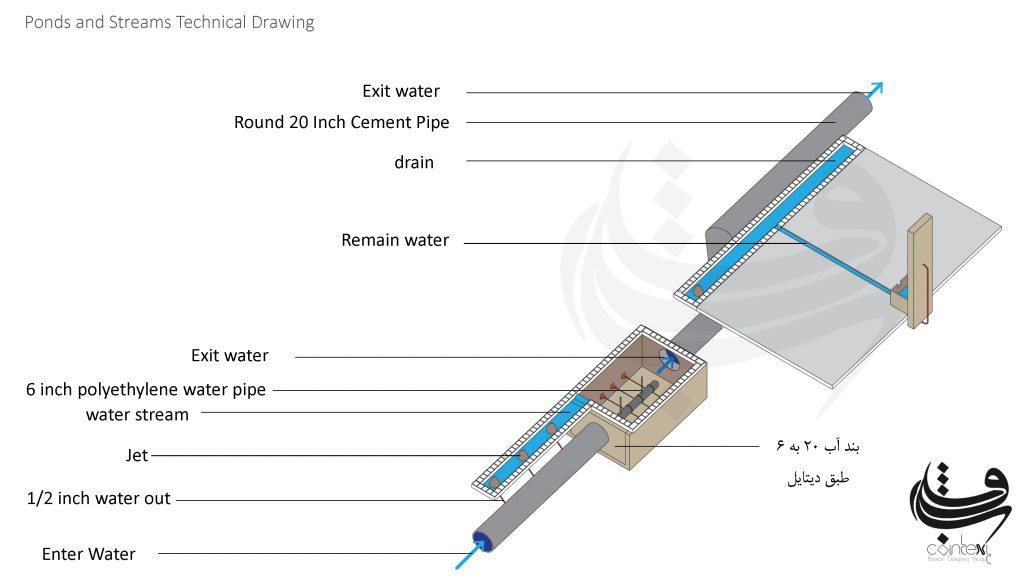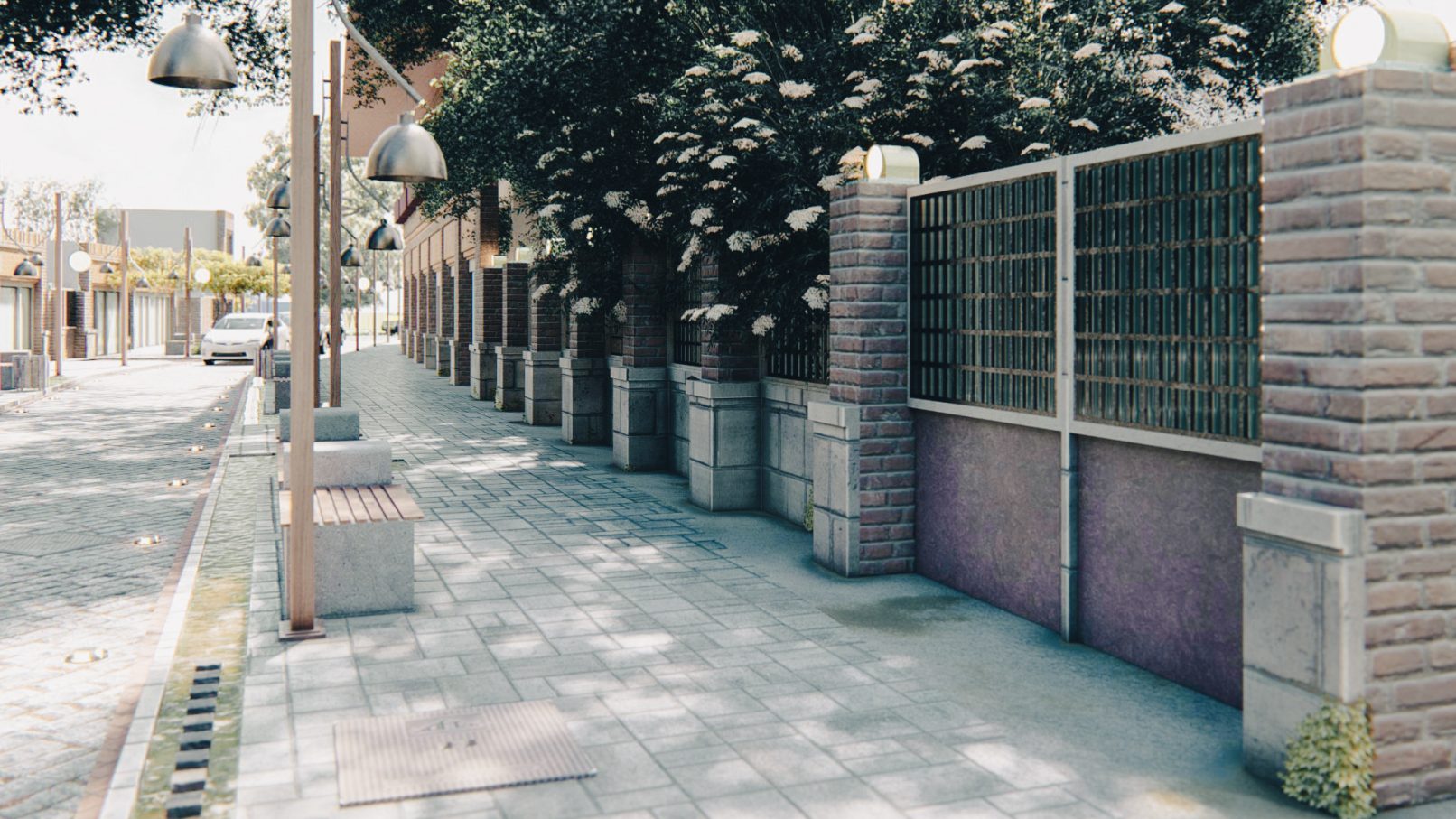Farahzad Tourism Route
The shift from conventional structural design to the concept of a “hierarchy of patterns” introduced a multitude of design-oriented solutions. This approach emphasizes the importance of progressing from intricate design details to broader design principles. In this way, every small element contributes significantly to the overall design process, fostering creativity and innovative design ideas.
This design approach was implemented in the second, third, and fourth stages of the project. It involved the meticulous design of street wall culvert openings on both sides, tailored to accommodate specific activities. Additionally, flooring design was a key aspect addressed across all three stages. Initially, this method involved the identification of existing design patterns, with a unique solution crafted for each pattern.
To effectively utilize these patterns, a deep understanding of event patterns was essential. To grasp the events and activities occurring within this context, attention was directed toward the behaviors exhibited by the axis’s users. This understanding was further enhanced through interviews and consultations with stakeholders such as restaurant owners, enabling the identification of key behavioral patterns within the space.
In the Farahzad Tourist Path project, we developed a custom algorithm to enhance the design process by leveraging Generative Design principles. This algorithm assesses key urban anchor points, maps out required spatial buffers, and generates a spatial layout divided into three zones:
1. Entry Zones (highlighted in orange): These areas serve as entrances to adjacent restaurants and shops, as well as spaces for urban amenities, providing standing, sitting, and pause areas with specialized paving.
2. Pedestrian Pathways (highlighted in grey): Dedicated to pedestrian movement.
3. Green Spaces (highlighted in green): Reserved for landscaping and natural elements.
By incorporating standard urban design radii, the algorithm swiftly maps out potential design spaces, guiding the designer in allocating zones for greenery, pathways, and resting areas. This generative approach enabled us to analyze a 700-meter path in minimal time, providing designers with a comprehensive spatial graph as a critical reference for further design work.
Generative Design, especially when paired with parametric tools like Grasshopper, does not diminish the role of the human designer. Instead, it highlights overlooked opportunities and accelerates pre-design analysis, making the process more efficient.
I’ve successfully implemented this technology and approach in several projects. If this process intrigues you or you’d like more information, please reach out!
The project was designed by Baaftaar Group in collaboration with architects, landscape architects, and urban designers from 2019 to 2020, and implemented from 2022 to 2023.
Lead Designer: Hooman R. Zand
Project Manager: Mazyar Abaee
Collaborators: Vida Janavi , Delnaz Safaralizadeh, and Karan Kianfar
Creating Streams and Ponds in Landscape Design
Creating streams and ponds in landscape design can truly elevate public spaces, offering a sensory experience that goes beyond visual aesthetics. The presence of water features like flowing streams and calm ponds not only enhances the ambiance but also provides a soothing atmosphere that improves comfort and well-being, especially in hot climates.
Embracing sustainable design practices, such as utilizing natural water systems without mechanical pumps, promotes resilience and energy efficiency. By harnessing gravity and the landscape itself to circulate water, these designs minimize energy waste while still delivering aesthetic and functional benefits, ensuring a sustainable approach for current and future generations.
In the Farahzad Tourism Route, integrating natural stream systems into public spaces creates a harmonious blend of nature and design, enriching the visitor experience and showcasing the beauty of sustainable practices. The attached design details exemplify how these principles enhance the space, adding vibrancy while promoting sustainability for a beautiful and enduring experience.



















